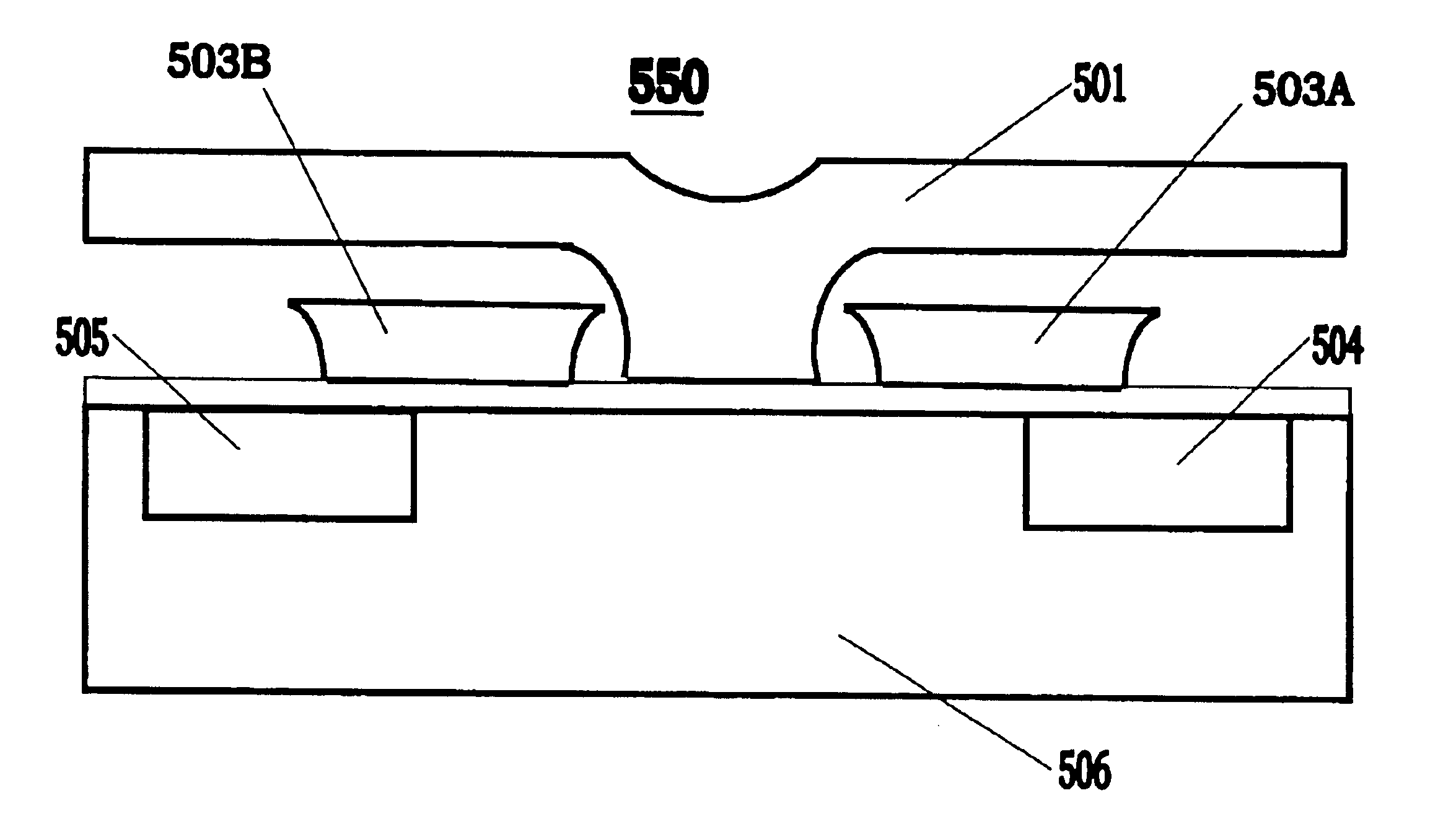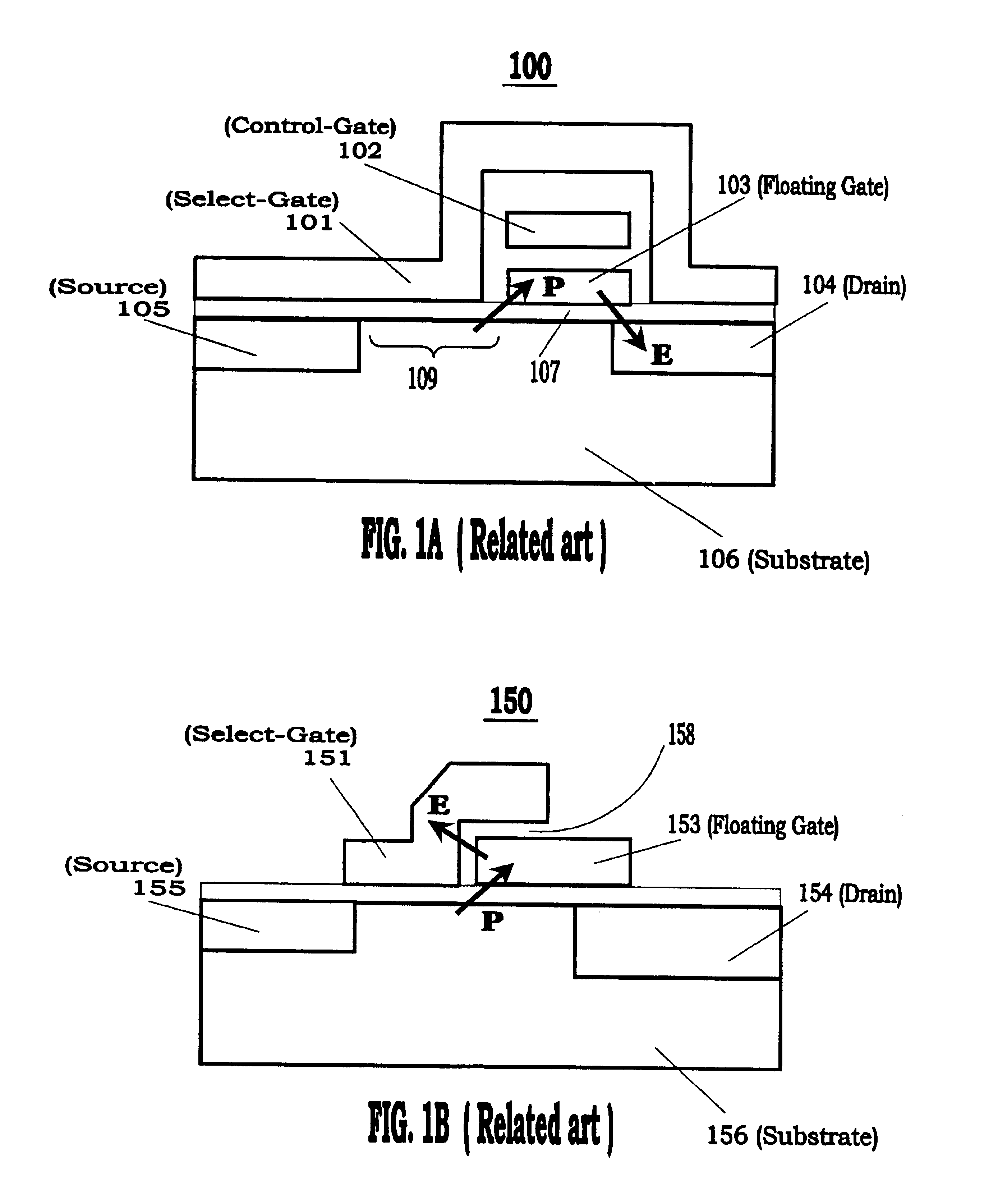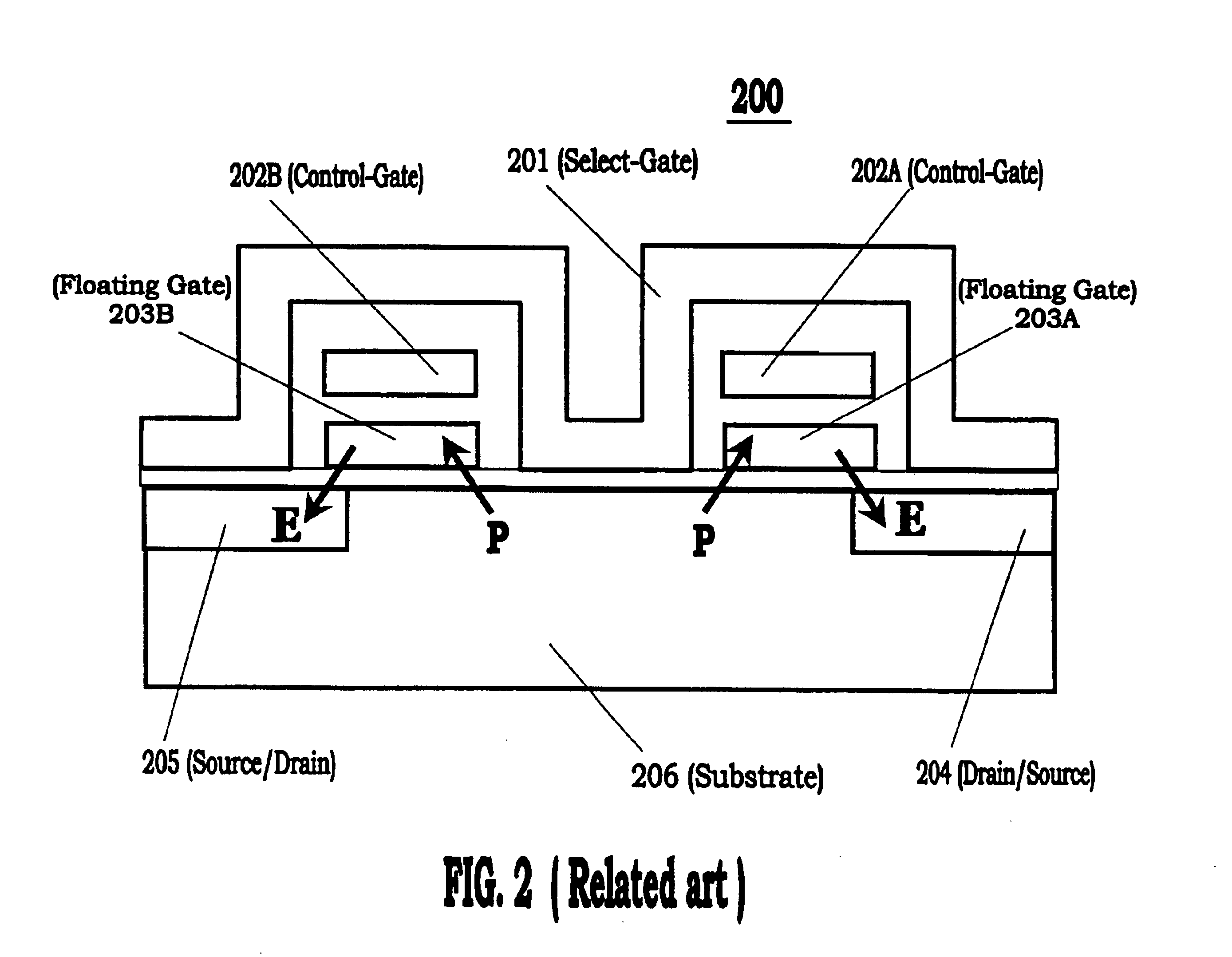Dual-bit double-polysilicon source-side injection flash EEPROM cell
- Summary
- Abstract
- Description
- Claims
- Application Information
AI Technical Summary
Problems solved by technology
Method used
Image
Examples
Embodiment Construction
In accordance with the present invention, a double-polysilicon dual-bit cell structure includes two symmetrical floating gates for storing two bits of information. The two floating gates are horizontally separated by a portion of a select-gate. The two floating gates are insulated from the select-gate by an inter-gate dielectric. The inter-gate dielectric is generally thick (to achieve a relatively small capacitance between the floating gates and the select-gate), but has a "weak region" so that during erase-mode electrons can tunnel from the floating gate to the select-gate. The cell also includes a conduction channel beneath and insulated from the two floating gates and the intermediate select-gate portion. The channel is bounded by a pair of source / drain junctions formed in a cell body region. As described below, this is a four-terminal cell.
FIG. 3 shows a cross-section view of a dual-bit flash EEPROM cell structure 300 in accordance with one embodiment of the present invention. ...
PUM
 Login to View More
Login to View More Abstract
Description
Claims
Application Information
 Login to View More
Login to View More - R&D
- Intellectual Property
- Life Sciences
- Materials
- Tech Scout
- Unparalleled Data Quality
- Higher Quality Content
- 60% Fewer Hallucinations
Browse by: Latest US Patents, China's latest patents, Technical Efficacy Thesaurus, Application Domain, Technology Topic, Popular Technical Reports.
© 2025 PatSnap. All rights reserved.Legal|Privacy policy|Modern Slavery Act Transparency Statement|Sitemap|About US| Contact US: help@patsnap.com



